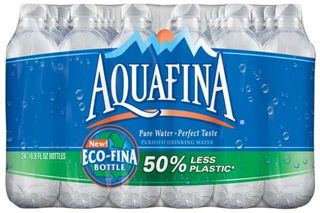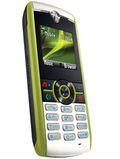The Pepsi company has an impressive sustainability effort underway. It’s working on improving the packaging of its snack brands like FritoLay so the bags can biodegrade quickly once they’re thrown away. Pepsi is reducing the carbon footprint of its production factories and offices. The beverage giant is encouraging employees to adopt personal sustainability goals. I spoke at the FritoLay headquarters for Earth Day, and was impressed at the many steps being taken to save energy and reduce waste. (Full disclosure: They gave out copies of my book to employees.) Pepsi is also working with entrepreneurs like Terracycle to capture single-serving snack bags from school lunchrooms and recycle them into a variety of other consumer products. Matt Smith, of Frito Lay’s Social and Environmental Sustainability department, told me that, with guidance from uber-enviro Al Gore, the company wants to be the most sustainable enterprise in the world.

It’s not like bottled water has been a public relations boon for Pepsi. To the contrary, Eco-Fina bottle or no, Pepsi has taken a lot of heat from green mom bloggers, social justice advocates, and consumer groups who feel that bottled water is an environmental nightmare. Pepsi has made some strides in reducing the environmental impact of the bottle, but still: they’re selling water, a local resource that is becoming more and more scarce, in communities grappling with drought, burgeoning populations and unchecked development.
Is Pepsi likely to abandon selling a product that generates millions and millions of dollars in revenue each year? Not unless there’s a compelling alternative — or competition. So how about this:
Get Pepsi to follow the example of cleaning companies like Arm & Hammer, which sells one empty bottle, plus cartridges of cleaning concentrate the consumer can mix with water at home. Couldn’t Pepsi sell a reuseable bottle that could be refilled at convenience stores and restaurants as well as at home? If Pepsi is mostly interested in selling water, it can market an in-store dispenser so people can fill up their reusable water bottles rather than purchase a new one each time they’re thirsty.
This idea is not only doable – it’s already being done, sort of. Consider 7-11. Every day, millions of people make their own Slurpees at 7-11 with nary a complaint. I haven’t met a person yet who is not capable of putting a cup underneath the Slurpee faucet and filling up. Why not figure out a way for people to bottle their own Eco-Fina water in the same way? True, this strategy wouldn’t put a dent in the proportion of bottles being sold out of vending machines. But it would severely reduce the number of plastic water bottles being sold at 7-11, Stop and Shop, and thousands of other convenience stores. Restaurants, meanwhile, could serve water in Eco-Fina-labeled pitchers. Since most of the water Pepsi puts in its bottles is tap water, there’s not much difference if it’s served in a branded bottle or a branded carafe.
I’d recommend that Pepsi not drag its heels too long waiting to make a change like this. Otherwise, some entrepreneurs at 7-11 just may take it into their heads to market their own branded refillable bottles, and then sell refills from the tap for the same amount of money they earn for stocking each bottle of Eco-Fina on their shelves (which usually amounts to about half the retail price of the product).
There’s nothing like a little competition to get someone to rethink their approach. 7-11, I hope you’re paying attention. Pepsi, you too.
NOTE: This post is part of this month’s Green Moms Carnival selection on food. Water is regulated by the Food and Drug Administration…though not very well.












7 thoughts on “Can Pepsi Learn From 7-11?”
And at least our 7-11 goes farther – you can bring in your own stainless steel cup and refill it. So, while we can argue about what is in Slurpees, at least my kids are doing it as green as possible – stainless steel bottles & stainless steel straws (or the Slurpee branded aluminum straws).
Great post and I love the idea of them selling reusable bottles and having places to refill them! Have you pitched it to them??
Although not directly on topic, Pepsi has limited the amount of organizations that can recycle their Frito Lay snack bags with Terracycle. I am waiting for my school to be one of the organizations that works with Terracycle with this venture since the open spots closed before I could register my school.
So, Pepsi open the gates for more recycling efforts and ditch the bottle water idea. Does the world need an eco-friendly plastic bottle? But more important the question is, is their water safer than tap?
Yeah! Love the refillable water idea. Kudos to Pepsi for the sustainable policy initiatives, but it seems to me they are talking out of one side of their mouth, while selling environmentally irresponsible bottled water with the other side. Not so ethical.
So, I hope they are reading your post. Great idea!
Katy
http://www.non-toxickids.net
Hurray for the news that Pepsi will not be bringing its bottled water to the BlogHer conference. Tiny wins add up. Let’s keep blogging away at this issue. It’s a big one!
All this goes to show that, despite the size of the company, consumers have a lot of power to force change. Why don’t we use it more often? That’s the key question.
[…] that bottled water is actually less regulated than tap water. She then goes on to ask, “Can Pepsi Learn From 7-11?” She says, “Every day, millions of people make their own Slurpees at 7-11 with nary a […]
Comments are closed.